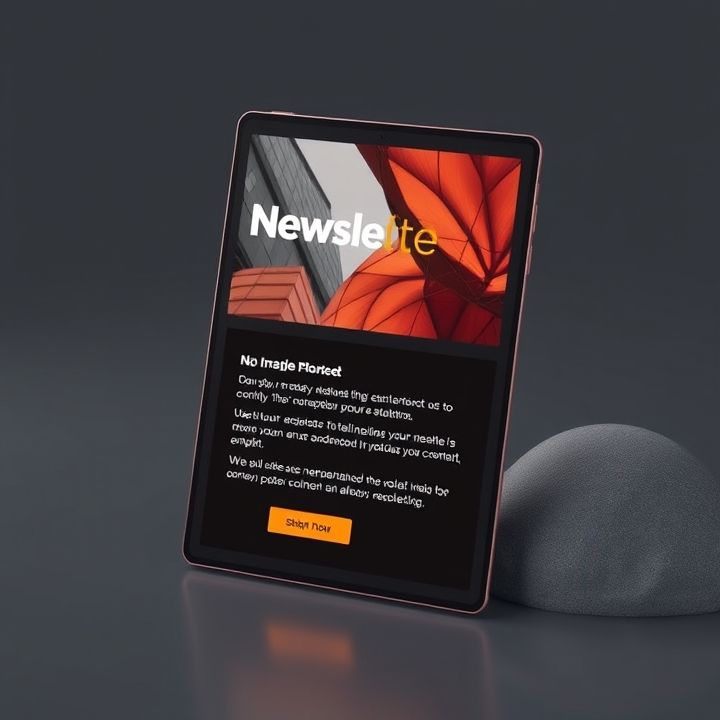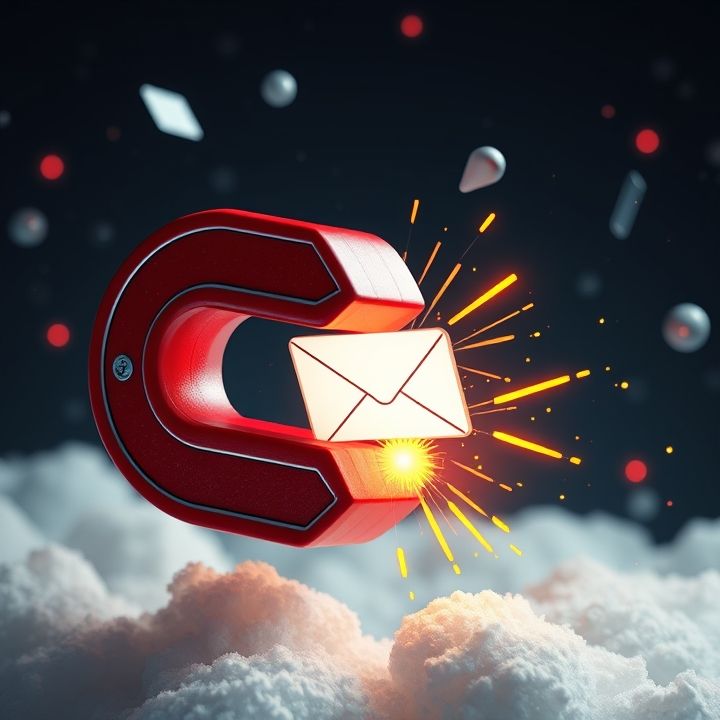Table of Contents
- Introduction
- Understanding Customer Segmentation: The Basics
- Identifying Key Segmentation Criteria for Email Strategy
- Mapping Customer Journeys: Timing and Relevance
- Determining Optimal Email Frequency for Each Segment
- Using Behavioral Data to Adjust Email Cadence
- Testing and Analyzing Engagement Metrics
- Incorporating Feedback Loops for Continuous Improvement
- Building Dynamic Segmentation Models for Evolving Audiences
- Conclusion
- Frequently Asked Questions
Introduction
Feeling overwhelmed by the flood of uninspired emails in your inbox? You’re not alone. Email fatigue is a common complaint, often fueled by irrelevant messaging and impersonal blasts. The secret to transforming this digital clutter into a channel for genuine engagement lies in mastering customer segmentation. When harnessed correctly, this technique allows businesses to deliver content that truly resonates with their audience, turning passive readers into active participants.
Consider the data below, showcasing the impact of effective segmentation on email campaigns:
| Metric | Without Segmentation | With Segmentation |
|---|---|---|
| Open Rate | 15% | 30% |
| Click-through Rate | 2.5% | 5.5% |
| Conversion Rate | 1% | 3.5% |
This article will guide you through the art of customer segmentation, equipping you to craft personalized strategies that not only increase engagement but also foster lasting relationships with your audience.
Understanding Customer Segmentation: The Basics
Customer segmentation involves dividing your customer base into distinct groups that share similar characteristics. This process is crucial for businesses aiming to target their marketing efforts more effectively. By understanding these different segments, companies can tailor their strategies to meet the unique needs and preferences of each group.
There are several ways to segment customers, including demographic, geographic, psychographic, and behavioral methods. Demographic segmentation looks at characteristics such as age, gender, income, and education level. Geographic segmentation focuses on location-based factors, such as country, region, or city. Psychographic segmentation delves into customers’ lifestyles, interests, and values, while behavioral segmentation analyzes purchasing patterns and brand interactions.
Implementing customer segmentation allows businesses to create more personalized marketing campaigns, improve customer engagement, and increase conversion rates. For instance, by identifying high-value customers, a company can offer exclusive rewards or targeted offers that enhance loyalty. Additionally, understanding which segments are most responsive to specific communication channels enables businesses to optimize their marketing spend and avoid overwhelming customers, thereby preventing email fatigue.
Identifying Key Segmentation Criteria for Email Strategy
Identifying key segmentation criteria is crucial for tailoring your email strategy and mitigating the risk of email fatigue. Customer segmentation allows businesses to customize their email frequency and content, ensuring that recipients receive relevant messages at the right time. One of the most critical segmentation criteria is demographic data, such as age, gender, and location. This information can help determine when recipients are most likely to engage with your emails. Behavioral data is another essential criterion, which includes past purchase history, browsing behavior, and engagement metrics like open and click-through rates. By understanding how customers interact with your brand, you can tailor email content and timing to their needs and preferences.
Additionally, psychographic data, including interests, values, and lifestyle, can offer deeper insights into shaping your email campaigns. Segmenting customers based on these criteria helps in crafting personalized messages that resonate with each group. Moreover, considering the customer’s lifecycle stage, such as new subscribers, repeat buyers, or lapsed customers, can assist in determining optimal email frequency and content. By leveraging these segmentation criteria, businesses can enhance customer satisfaction, increase engagement rates, and reduce the chances of overwhelming their audience with excessive emails.
Mapping Customer Journeys: Timing and Relevance
Mapping customer journeys involves understanding the distinct phases a customer goes through when interacting with a brand. It’s crucial for determining the timing and relevance of emails to enhance engagement without overwhelming the recipient. This process begins by identifying key touchpoints, such as when a customer first signs up, makes a purchase, or abandons a cart. Each stage of the journey presents an opportunity to tailor communication that meets specific customer needs.
For instance, welcome emails can be sent immediately after sign-up to capitalize on the initial interest, while follow-up messages can be scheduled according to the customer’s shopping behavior. Relevance is achieved by personalizing content based on past interactions and preferences. By leveraging data analytics, companies can deliver messages that resonate, whether it’s through personalized recommendations or timely offers. This ensures that emails provide value rather than contribute to email fatigue.
Overall, understanding and mapping the customer journey enable businesses to strike a balance between informative and intrusive communication, ultimately fostering a positive relationship with their audience.
Determining Optimal Email Frequency for Each Segment
Determining the optimal email frequency for each customer segment is crucial in avoiding email fatigue and maintaining engagement. The first step is understanding the behaviors and preferences of each customer segment. Analyzing past email performance data can be invaluable, as it provides insights into open rates, click-through rates, and unsubscribe rates specific to each segment. These metrics offer a glimpse into how different groups respond to varying frequencies.
Consider setting different frequencies based on the engagement level of each segment. For example, highly engaged customers might appreciate more frequent communications, while less engaged segments may prefer fewer emails to avoid feeling overwhelmed. A/B testing can also be leveraged to experiment with different frequencies within segments to identify the most effective cadence.
Another approach is to ask customers directly about their email frequency preferences. Surveys and preference centers can empower subscribers to choose how often they hear from you, enhancing the personalization of your email marketing strategy. By respecting these preferences, businesses not only tailor their communication efforts but also foster loyalty and trust among their audience.
Ultimately, the key to determining optimal email frequency is maintaining a balance that maximizes engagement without crossing the threshold to becoming a nuisance.
Using Behavioral Data to Adjust Email Cadence
Using behavioral data to adjust email cadence is a powerful strategy for enhancing your customer engagement and reducing email fatigue. By analyzing patterns such as open rates, click-throughs, and browsing habits, businesses can segment their audience more effectively and tailor email frequency to match individual preferences. For instance, subscribers who frequently engage with your emails might appreciate receiving communications more often, while those who rarely open emails might benefit from less frequent updates.
By leveraging data on customer interactions, marketers can also identify the optimal timing for sending emails. For example, if a particular segment of your audience tends to open emails in the evening, scheduling your messages accordingly could lead to higher engagement rates. Furthermore, behavioral data can inform the content of your emails, ensuring that it resonates with the recipient’s current interests or past interactions with your brand. This personalized approach not only fosters a more positive experience for the consumer but also enhances the overall effectiveness of your email campaigns.
Ultimately, utilizing behavioral data to adjust email cadence allows for a more targeted, efficient, and user-friendly communication strategy, ensuring your messages do not get lost in the inbox or contribute to email fatigue.
Testing and Analyzing Engagement Metrics
Testing and analyzing engagement metrics are crucial steps in refining your email marketing strategy. These practices help businesses understand how recipients interact with their emails and allow for tailoring of future campaigns to enhance performance. Key metrics include open rates, click-through rates, and conversion rates. By examining these metrics, businesses can identify patterns and establish benchmarks to better gauge the effectiveness of their campaigns.
A/B testing is an effective method for testing different elements such as subject lines, send times, or content variations to determine which resonates best with your audience. By segmenting your customer base and testing across these segments, you can uncover preferences unique to each group. This insight allows businesses to tailor email frequency and content to maximize engagement and minimize the risk of email fatigue.
Analyzing engagement metrics over time provides a comprehensive view of how customer preferences evolve. With this data, companies can implement more informed strategies, like adjusting frequency for segments showing signs of declining engagement, ultimately aligning email campaigns with the interests and needs of their audience. This continual analysis and adjustment process ensures emails remain relevant, engaging, and effective in achieving business goals.
Incorporating Feedback Loops for Continuous Improvement
Incorporating feedback loops into your customer segmentation strategy is crucial for continuous improvement. A feedback loop allows businesses to collect valuable insights from customers, which can be used to refine email marketing strategies. This process typically starts with gathering data through surveys, customer interactions, and analysis of email engagement metrics like open and click-through rates. By understanding customers’ preferences and behaviors, businesses can adjust their email frequency accordingly.
Feedback loops should be seen as a dynamic, ongoing process where continuous learning leads to better personalization. Analyzing the collected feedback enables marketers to identify patterns or shifts in customer behaviors, ensuring that email content remains relevant and engaging. This not only prevents email fatigue but also enhances customer satisfaction and loyalty.
Implementation is key: utilize automation tools to streamline the process of gathering and analyzing feedback. Regularly scheduled reviews of feedback data help in assessing the effectiveness of your segmentation efforts and making necessary adjustments. By fostering a culture of iterative improvement, businesses can maintain a responsive approach, optimizing their email strategy to better meet customer needs and expectations.
Building Dynamic Segmentation Models for Evolving Audiences
Building dynamic segmentation models for evolving audiences is crucial in creating personalized email marketing strategies that resonate with your subscribers. The primary goal is to segment your audience based on overlapping characteristics and behaviors, which often change over time. Start by gathering comprehensive data such as purchase history, browsing behavior, demographic details, and engagement metrics from previous campaigns. Using this data, create flexible segments that can adapt to changes in customer behavior and preferences. This approach allows for real-time adjustments in segmentation, ensuring your marketing efforts remain relevant.
Employing artificial intelligence and machine learning can enhance the precision of these models by identifying patterns and trends within your audience’s activities that may not be immediately apparent. Incorporating these insights into your segmentation strategy enables you to send more targeted email campaigns tailored to the individual preferences of your subscribers. By reducing the likelihood of sending irrelevant messages, dynamic segmentation significantly mitigates the risk of email fatigue. This method not only enhances customer satisfaction but also improves overall engagement rates, allowing you to foster more meaningful relationships with your audience through customized communication.
Conclusion
In conclusion, by mastering customer segmentation, businesses can unlock the true potential of their email marketing strategies, drastically reducing email fatigue and enhancing engagement. Understanding your audience’s unique characteristics—whether demographic, behavioral, or psychographic—allows for a more tailored approach, ensuring that communication remains relevant and impactful. Leveraging data analytics and feedback loops can refine these strategies further, providing insights into optimal timing, frequency, and content that resonate with each segment. Additionally, the continuous adaptation to evolving customer preferences ensures that email campaigns stay fresh and effective. By embracing a dynamic and data-driven segmentation method, companies can foster stronger customer relationships, improve conversion rates, and achieve a more efficient return on investment. Ultimately, this approach not only improves the customer experience but also positions businesses to thrive in an increasingly competitive digital landscape. Therefore, it’s clear that customer segmentation is not just a tool for marketers but a fundamental strategy for sustainable growth and customer retention.
















